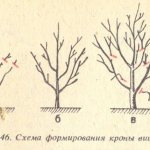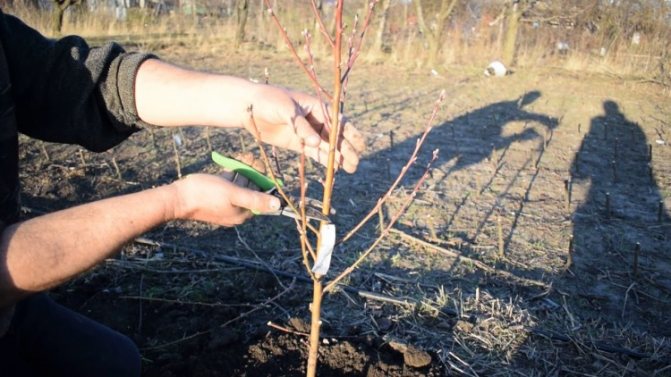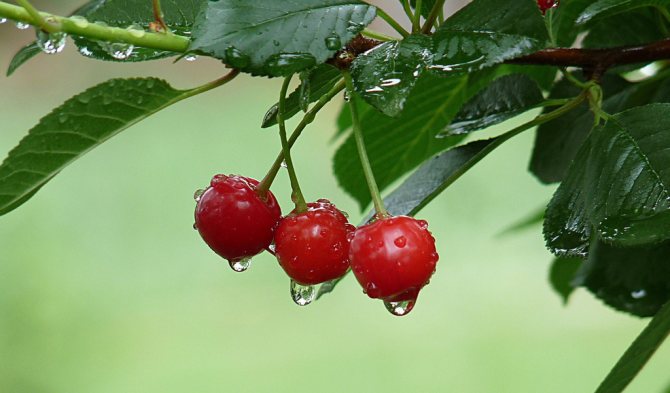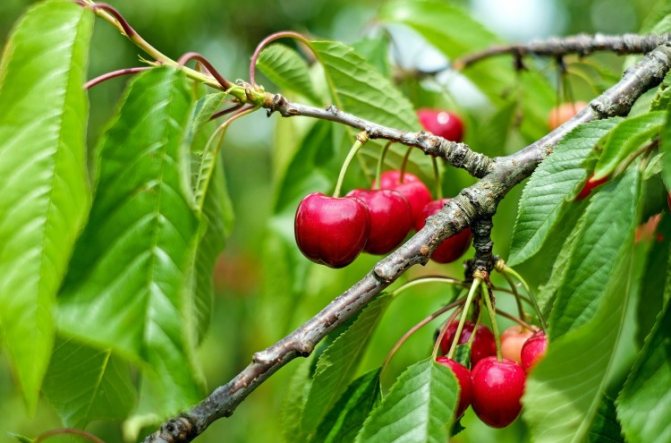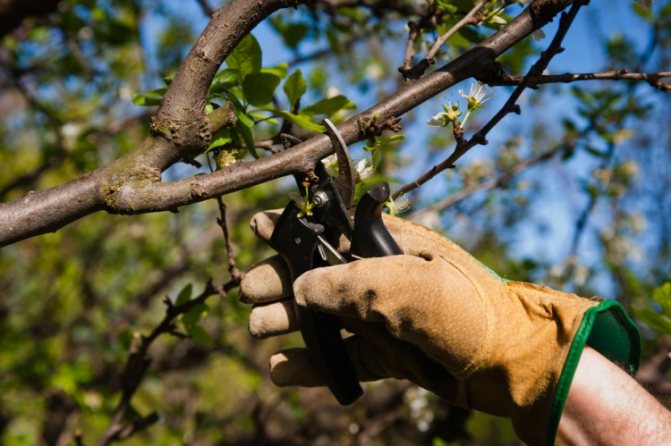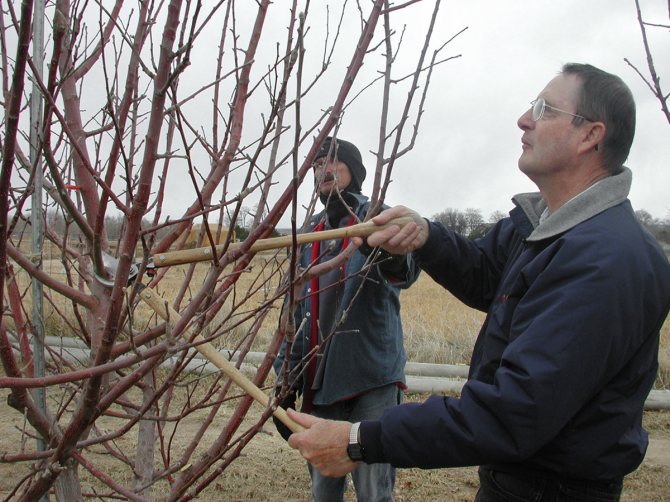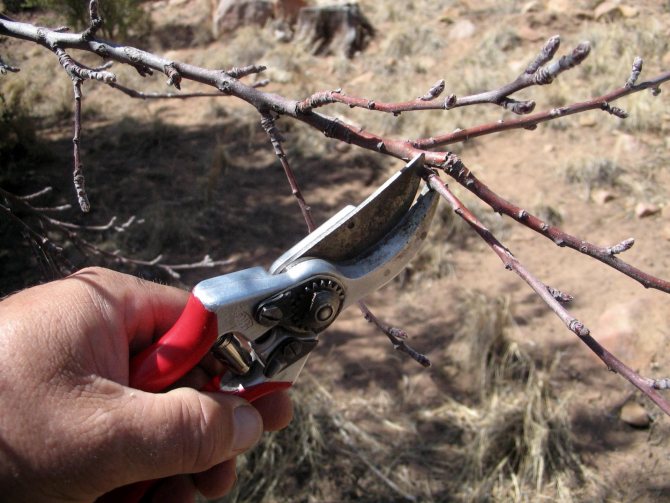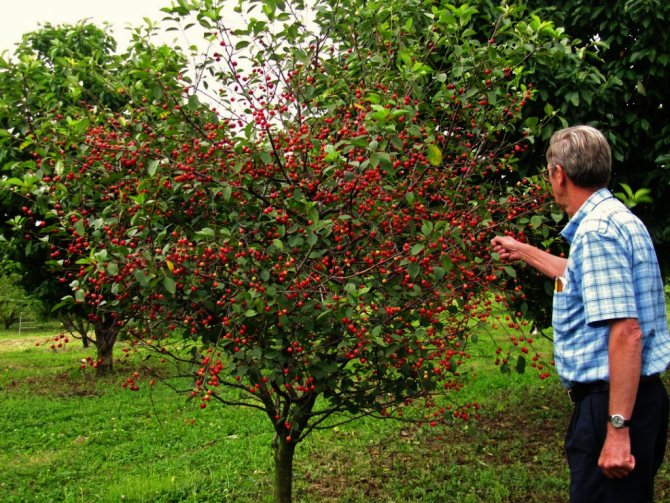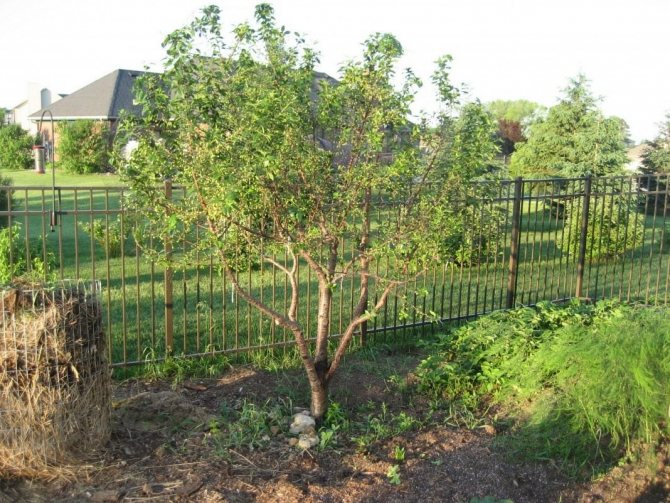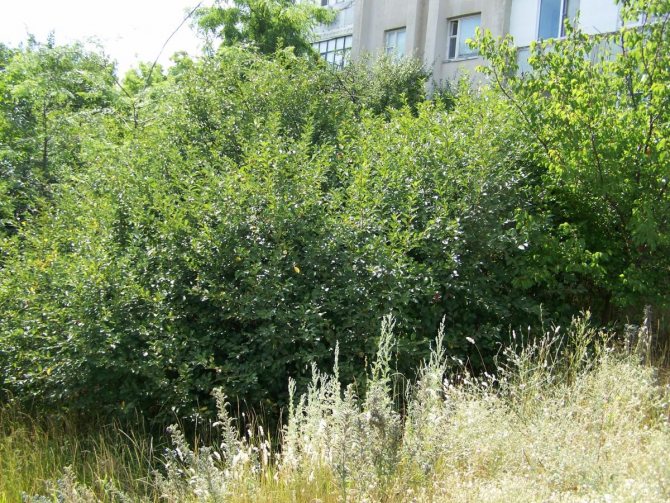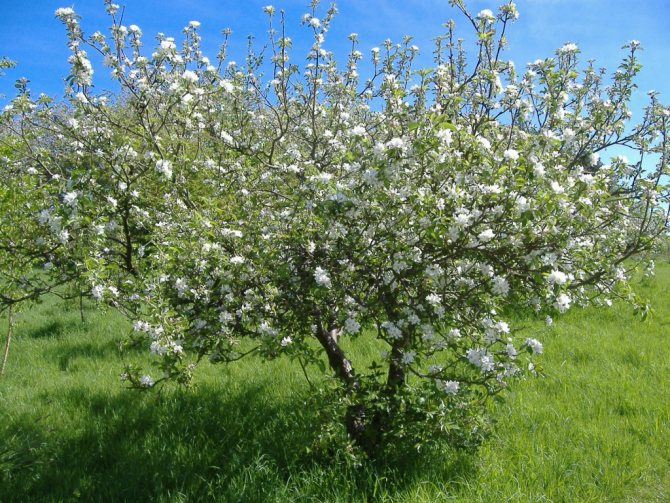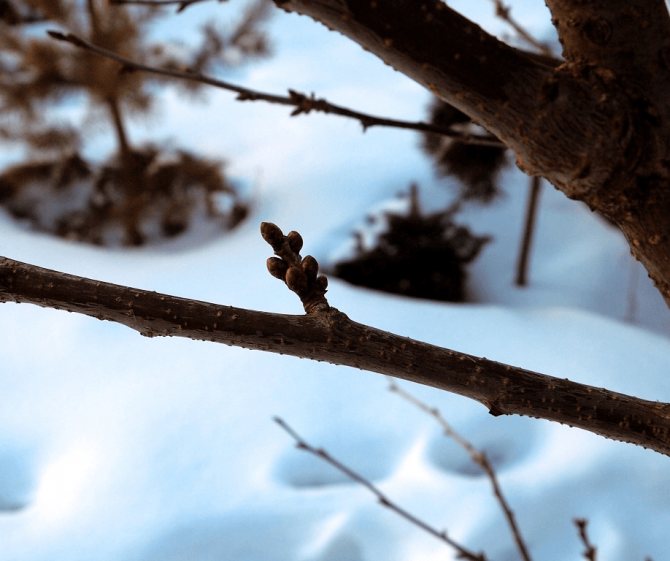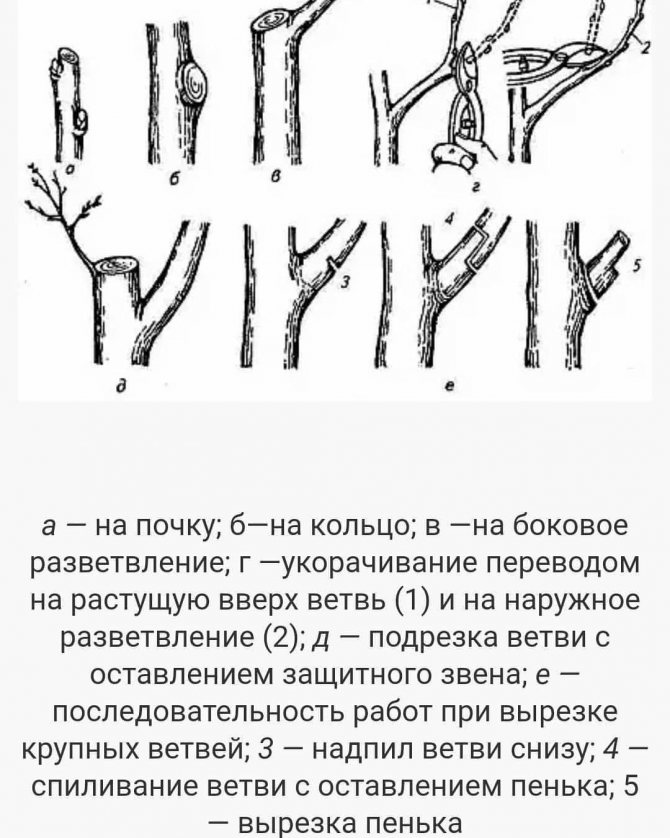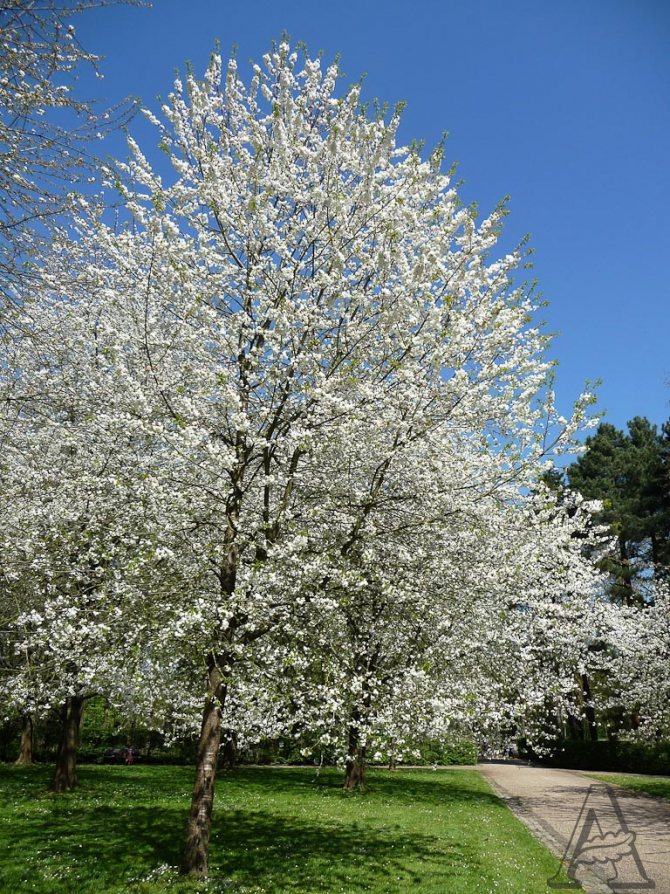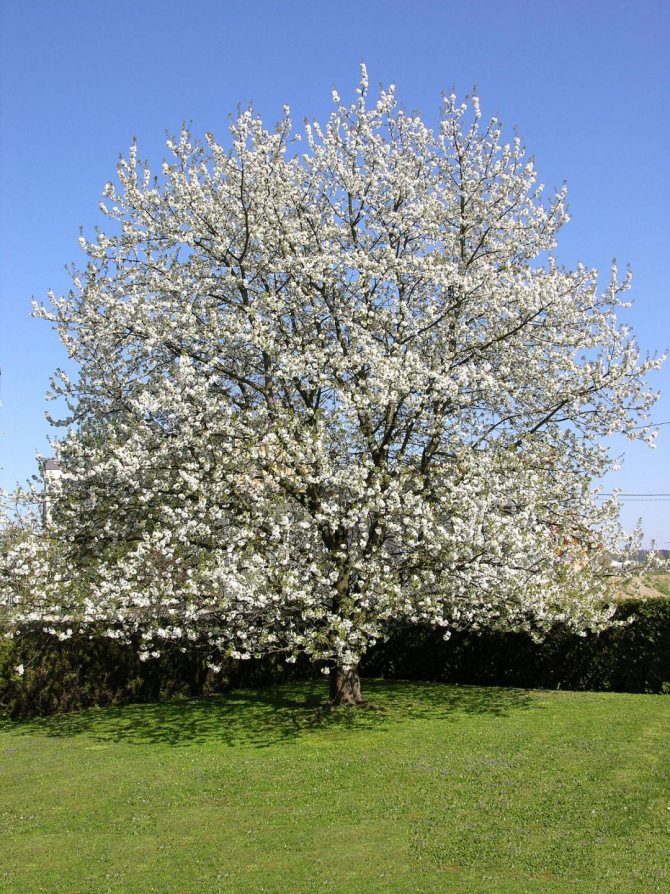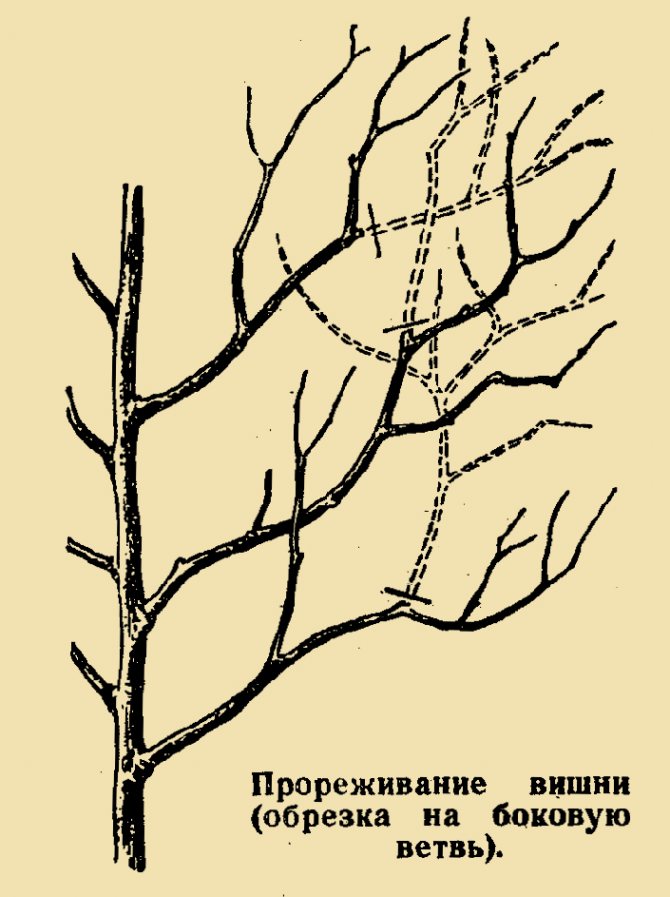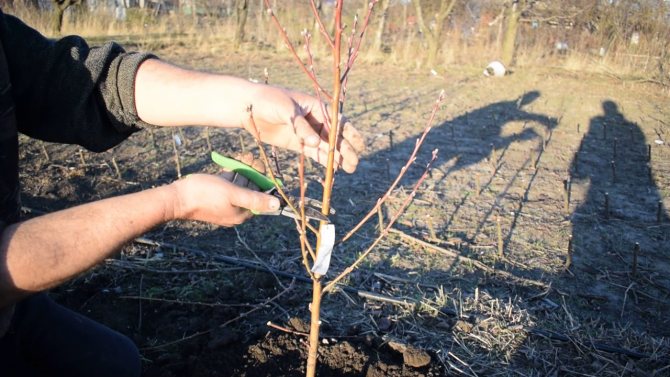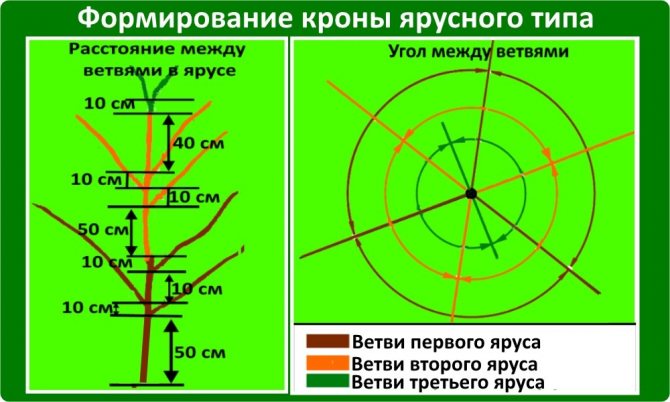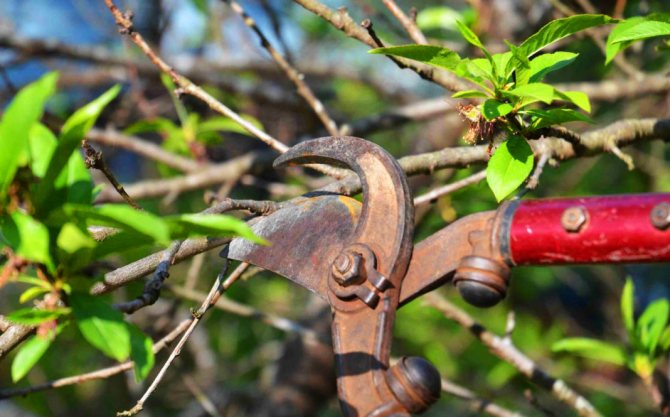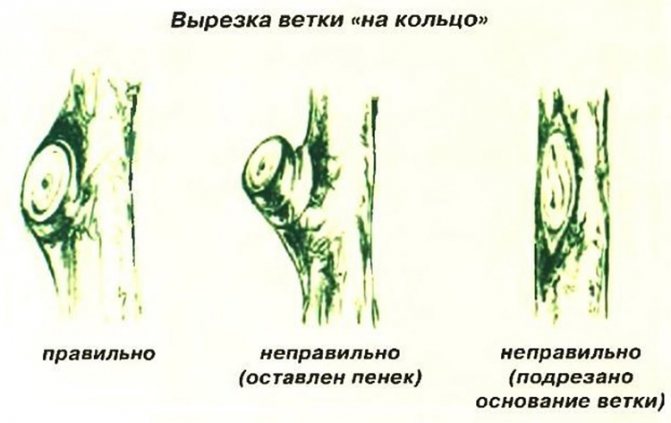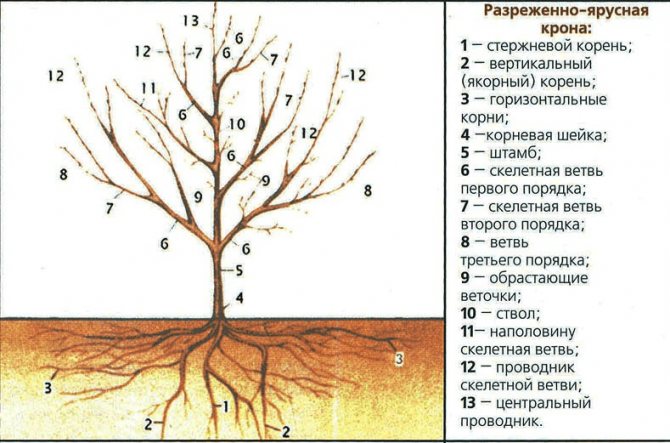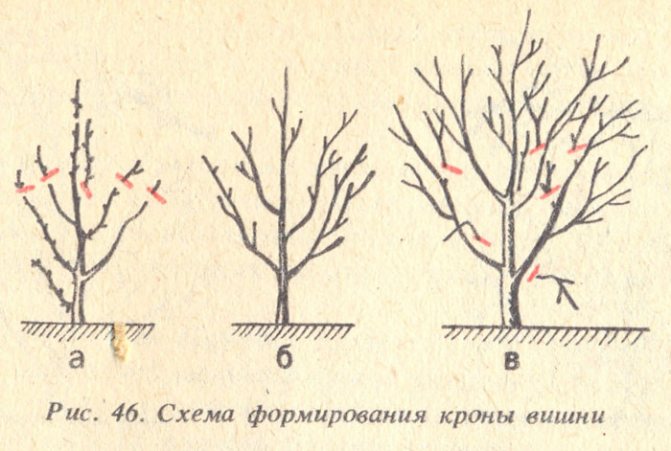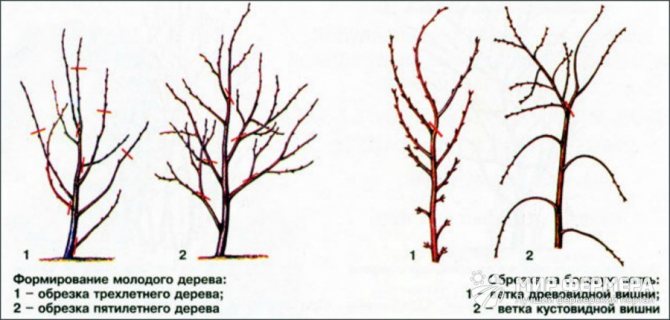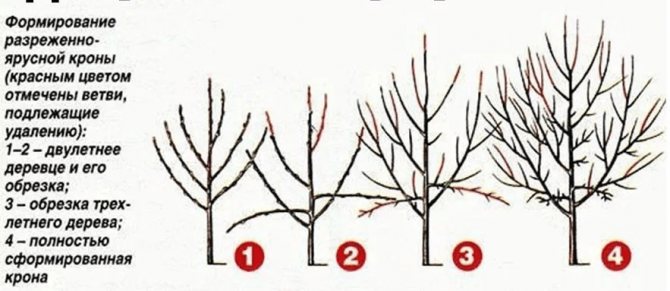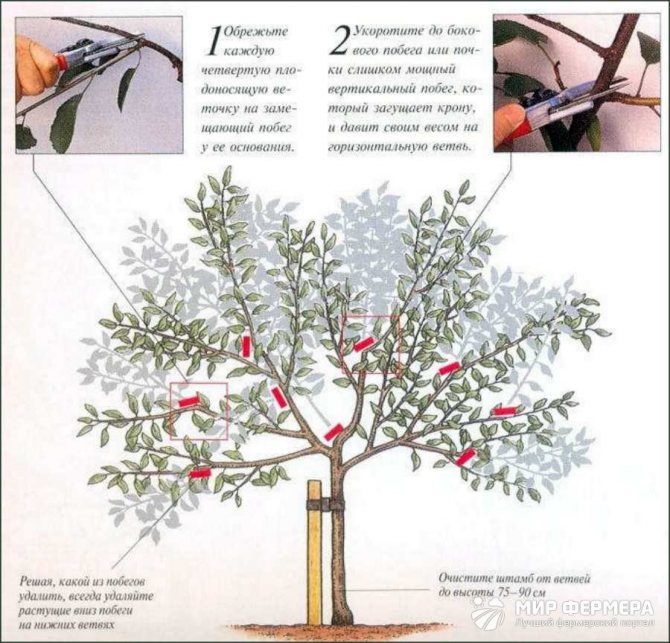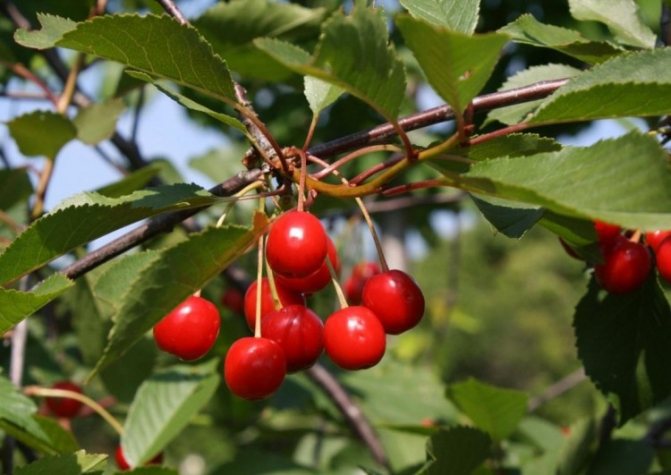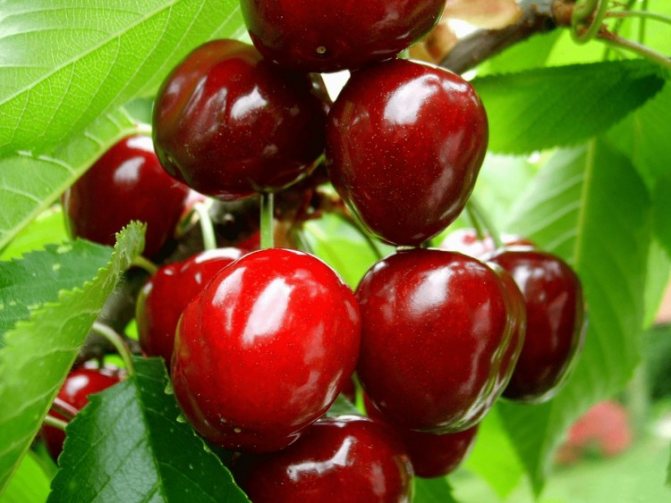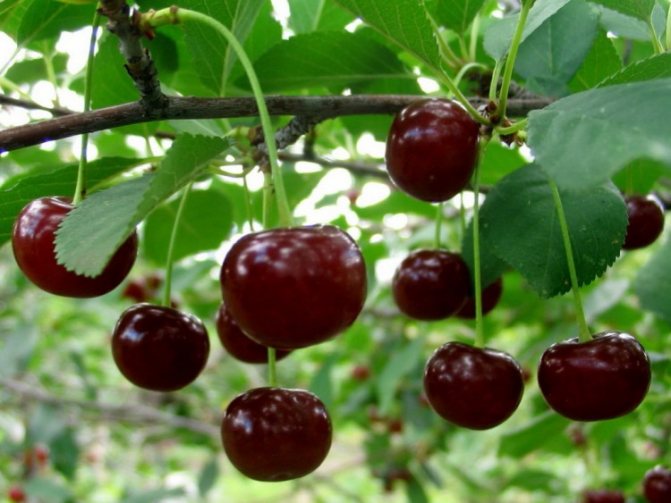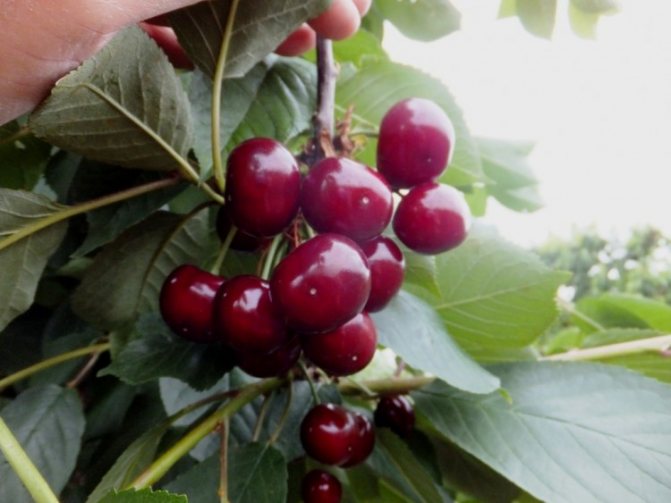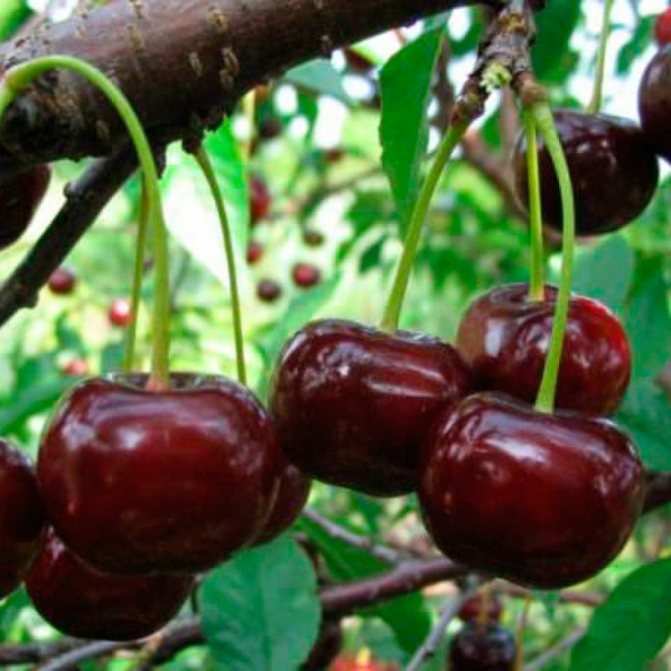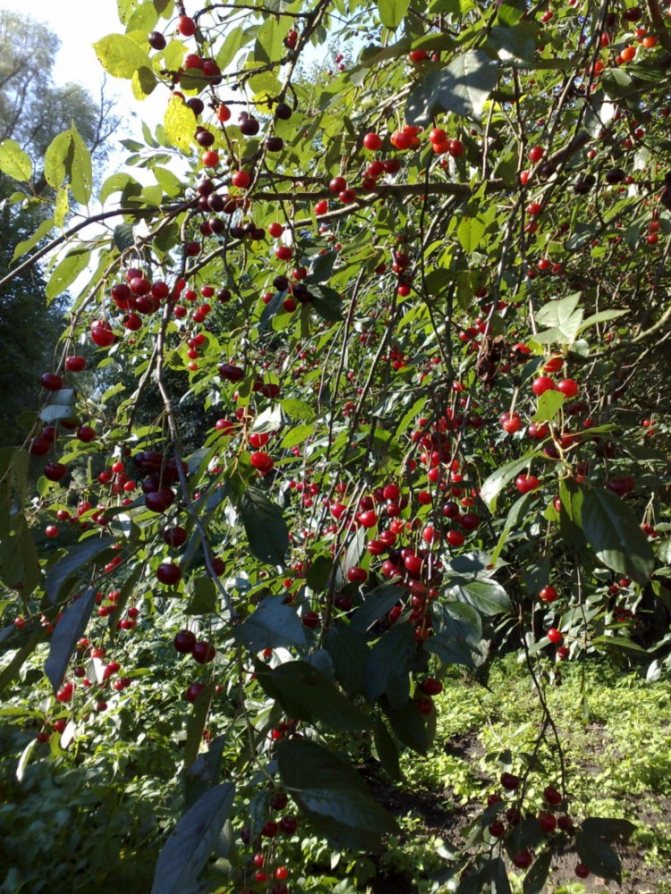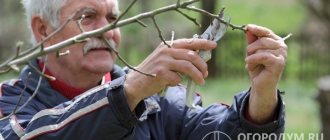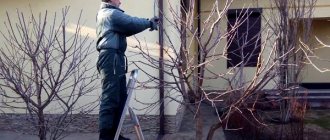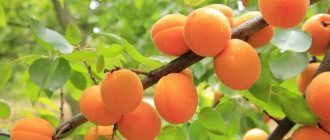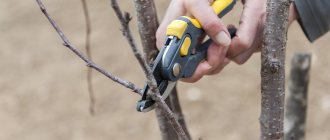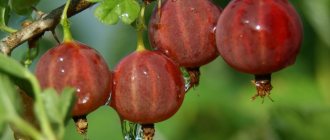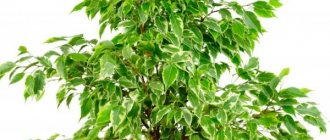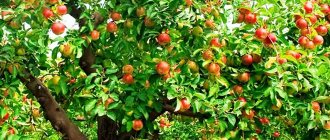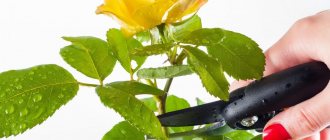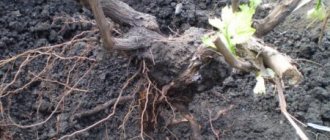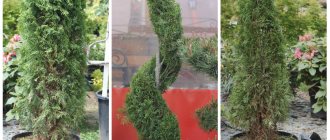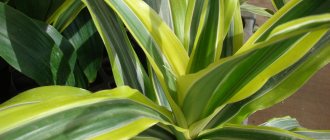Spring pruning of cherries is an important and necessary procedure that can effectively affect the growth, development and life of the plantings, as well as the quantity and quality of fruits. Knowing the basic principles of technology, pruning cherry bushes will not be difficult even for a novice gardener. These activities must be carried out correctly, otherwise the culture can do more harm than good.
- Young cherries: nuances of formative pruning
Video: spring pruning of a young cherry
- Video; stimulating spring pruning tree cherry
- Video: rejuvenating cherries that give root shoots
Pruning features
The most important thing for a tree is pruning in the spring. The operation allows you to form the required shape of the crown, ensures normal air circulation and a sufficient amount of sun.
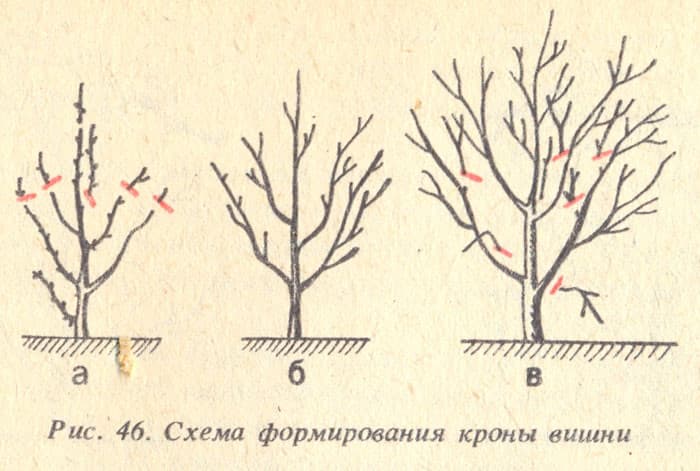
Crown formation begins after the tree reaches four years of age.
Since cherries are thermophilic, pruning should be done in good weather.
The optimal time for the procedure is the second half of March, when the probability of recurrent frosts is negligible. Dates may vary slightly depending on the conditions of a particular climatic zone. The main thing is to be in time before the start of active sap flow. After winter, the cherry dried up, or rather its branches, they are removed first, as well as those branches on which the cherry disease is visible, so that they do not take juices from the tree and do not infect it. Damaged shoots are also removed, since the cherry does not need them. Any cut should be covered with var or special ointment.
Read about how to form a pear here.
Rejuvenation of old cherries
The main purpose of pruning an old tree is to rejuvenate the plant and increase the quality of its yield. Correct pruning of cherries is done according to a clear scheme:
- reduce the number of branches and shorten their length by three times;
- remove skeletal branches to the place where buds or lateral branches grow;
- if the branches inside the crown dry up, remove the shoots on the side branches;
- one-year-old increments are not cut off.
It is not recommended to prune a large number of branches in one procedure. It is necessary to remove unnecessary increments in 2 or 3 stages. Unlike a young seedling, an old plant is much more difficult to tolerate pruning and wound healing.
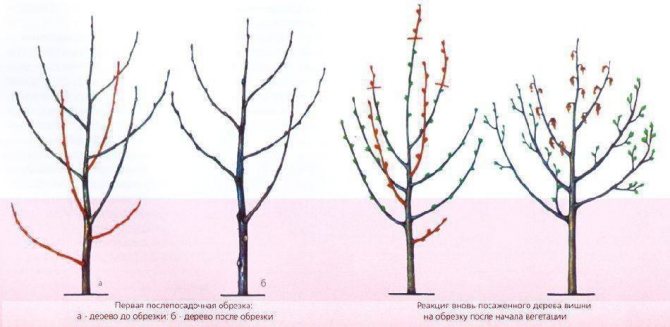

Cherry pruning
It is necessary to control the growth of old cherries, as well as leave time for the formation of new branches.
Spring pruning
Spring pruning is aimed at forming the crown of the fruit tree. If you carry out the procedure regularly, trimming will not be needed in summer and autumn. Key Features:
- It is advisable to shorten shoots with branches in the month of April after swelling of the buds.
- Remove all branches thickening the crown, branches growing upward, cut under the base, leaving minimal branches. If the shoot is no more than 30 cm in length, leave it as it is, removing only those branches that interfere with the development of the rest. At the end of the procedure, trim the trunk - it should rise no more than 20 cm above the frame.Carry out the work before the start of sap flow - so the tree will quickly recover and not get sick. If the cherry is felted, after the development of the seedling, the branches in the first year are shortened to 0.5 m. Then about a quarter of the lateral branches are removed. Since the felt cherry has a dense crown and gives a small amount of fruit, leave the strong branches and cut them to 10 cm, and remove the rest to the base of the trunk.
Read about spring pruning of apple trees at the link.
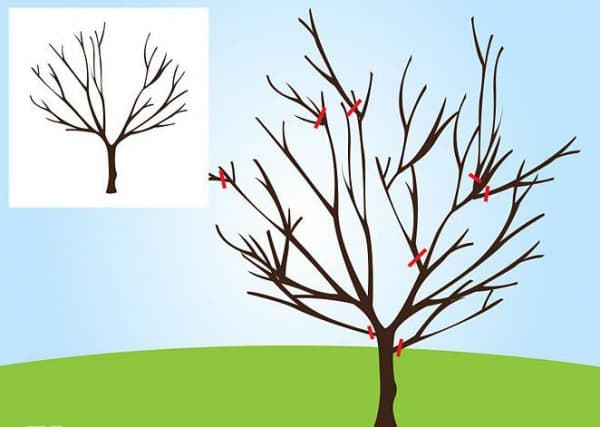

Pattern: Pruning cherries in spring.
Spring pruning will allow you to identify branches frostbitten in the winter season and arrange the crown.
Basic rules for deleting branches
Cherry pruning requires a delicate approach, since inaccuracies in pruning can cause tree depletion and negatively affect its fruiting. When carrying out the procedure, the varietal characteristics and age of the woody plant should be taken into account.
Tools for the job
In the process of forming the crown of a fruit tree, both thin and rather thick branches are removed. Therefore, the gardener should have the following tools in stock:
- garden pruner for removing shoots with a diameter of no more than 2.5 centimeters;
- lopper for trimming shoots from 3 to 5 centimeters thick;
- garden saw or hacksaw for cutting down tree trunk and massive branches.
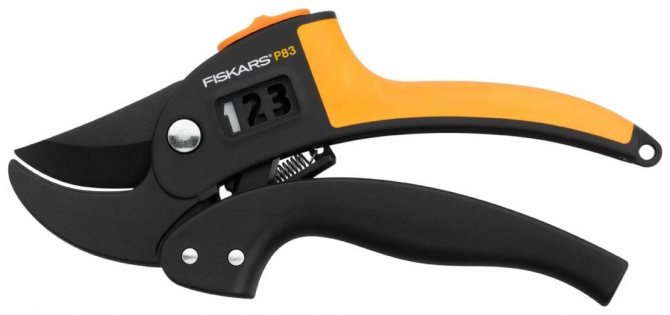

You will need a garden pruner to trim the cherries.
To ensure a smooth cut and prevent injury to the plant, all tools must have a sharp, rust-free blade. Before carrying out the procedure, the cutting parts of the garden tools must be treated with a disinfectant.
Features of pruning depending on the age of the tree
It is necessary to start creating the correct symmetrical shape of the cherry crown in the first season after planting the plant in a permanent place. Pruning of young seedlings is carried out exclusively in early spring, before the buds begin to awaken.
To form a branched part of an annual cherry, you must:
- Provide a balance between the aboveground part and the root system. For this, 5 strong skeletal processes diverging to the sides are left on the seedling, which are at a distance of at least 10 centimeters from each other. The rest of the branches must be completely removed, excluding the formation of hemp.
- Undercut the center conductor on seedlings that are too tall. If the young tree has reached a height of more than 1 meter, then the upper highest branch should be cut up to 80 centimeters above the bud.
- Carry out pruning of thin processes. If the branches extending from the trunk are too long, they need to be shortened by 15 centimeters. In this case, all remaining skeletal shoots should not be higher than the central conductor.
For the next four years, cherry pruning is mainly about thinning the crown. For this purpose, it is necessary to regularly remove all growing towards the trunk and crossed tree branches.
To provide light access to the flower buds being laid, no more than 15 skeletal branches should remain on the fruit plant. All excess shoots are recommended to be trimmed regularly.
The full development of the branchy part of the cherry is achieved by the age of five. Such trees require sanitary pruning and the removal of excess branches as the crown overgrows.
Scheme
Cherry pruning is recommended annually. The procedure is carried out according to the established scheme, which includes complete removal of:
- dry, broken off woody shoots;
- shoots affected by diseases;
- intertwining branches directed towards the table;
- shoots growing at a distance of less than 70 centimeters from the ground;
- branches extending from the trunk at an oblique angle.
After completing the procedure, it is necessary to lubricate all sections with garden varnish or oily paint. Such treatment will eliminate various infections and accelerate the process of wound healing.
So that the tree is not too tall when the trunk reaches 3.5 centimeters, its upper part must be trimmed. It is better not to shorten the branches of fruiting cherries, since the buds of such a fruit tree are located at the ends of the shoots. If necessary, only pruning processes that have reached the age of two are pruned.
Summer
Summer trimmings perform auxiliary functions. When the tree is in a growing state, any cut heals poorly. If the branches are removed in the summer, it turns out that they accumulated nutrients in the spring in vain - all trace elements are thrown away along with the cut off shoots. Also, in the summer months, it is imperative to correct the crown by removing diseased branches. All material with signs of the disease is not only removed from the site, but also necessarily burned. If this is not done, the infectious process can go further along the site.
Read about the characteristics of the Bessonovsky bow here.
If the summer is very hot, no pruning is done.
Reasons for pruning cherries
Cherry pruning plays an important role in maintaining the health of the tree, and also allows:
- form the crown correctly, which contributes to better development, fruiting and good immunity;
- increase yields and rejuvenate the tree. Since the crown of a cherry is in close connection with the roots, an excessive amount of branches overloads the root system, and it cannot fully supply the tree with nutrients. Removing most of the non-viable shoots allows the cherry to channel energy into the formation of new branches and the formation of fruits;
- prevent diseases. A properly formed, non-thickened crown will be able to receive a sufficient amount of sunlight, which will positively affect the development of the plant, and good ventilation will serve as a preventive measure against various diseases, especially fungal ones.
Many gardeners believe that it is not worth pruning cherries, as this can provoke gum flow. But such a situation can arise only when a large number of branches are cut out of the crown at once.
Autumn
The main role of autumn pruning is to help the tree prepare for winter. In order not to harm the tree, choose the right timing for the work. In the southern regions this period is up to November, in the northern regions - until mid-September. Wait until sap flow slows down - this process indicates the end of the growing season. It is important to be in time before the frost, otherwise the damage may not heal and the tree will die.
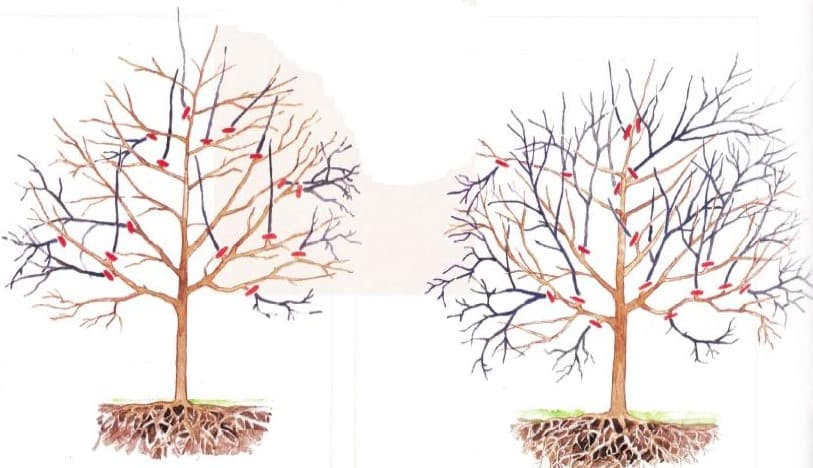

Pattern: Pruning cherries in autumn.
The seedling in the year of planting before the onset of winter is by no means cut off.
Work flow chart:
- All branches that interfere with the normal development of the plant are removed. Skeletal parts may be an exception.
- It is advisable not to touch small shoots until spring at all.
- Consider the rejuvenating effect - the fruiting of the plant should increase after the procedure.
- Make sure that after pruning, there are no branches on the tree that extend from the trunk at an acute angle.
- Any cut must be processed with a var or other means specially designed for these purposes.
Read about the formation of the crown of a columnar pear in this material.
Why prune a cherry tree?
The main tasks of the correct pruning of cherries:
- creating the correct crown of the tree;
- the ability to control growth;
- tree rejuvenation;
- removal of dry branches;
- fruiting management;
- disease prevention;
- destruction of pests.
The specifics of pruning
Shrub and tree cherry varieties require qualitatively different approaches:
- Cherry Kharitonovskaya and Turgenevskaya are tree-like varieties; in such varieties, all shoots in a row should not be removed, as this only injures the plant. Shorten the crown gradually until the tree is 3 m high.If the culture grows very quickly, it is recommended to additionally do thinning - they contribute to the formation of a crown of the correct shape. If the tree has stalled, prune off those branches that do not produce fresh growth.
- Shrub varieties can be cut much more boldly, which is why the generous bush cherry is so loved by gardeners. Minor and wireframe branches are processed in two approaches. If necessary, the processing of secondary branches can be postponed until the new season. Pay special attention to young growth - there must be a sufficient number of branches, otherwise the harvest will suffer.
When working with seedlings, use a saw or garden knife, as pruning shears will damage fragile branches.
Annual pruning of a fruiting tree: sanitary and stimulating
Maintenance sanitary pruning of cherries is performed every year in early spring. This must be done carefully and carefully. They start with adult fruit-bearing trees, since all stone fruit crops are the first to release inflorescences, and only after they dissolve the leaves. They start pruning seedlings a little later.
The pruning scheme is as follows:
- Clearing the crown from thickening and unnecessary branches.
- Giving the tree the desired shape.
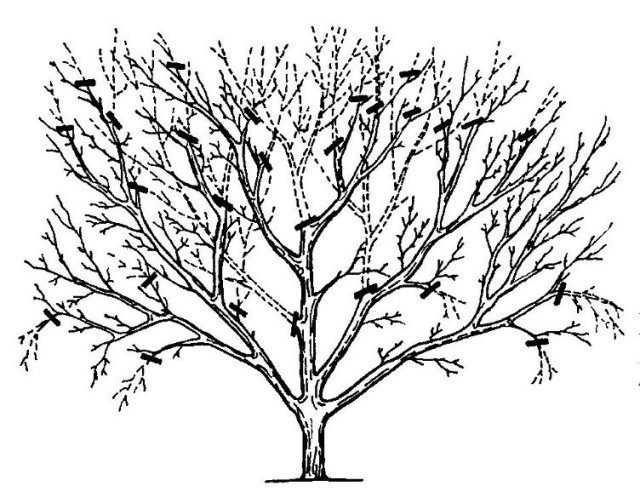

In the spring, the crown of the cherry is thinned out, cleaned of unnecessary branches and given the desired shape
The technology of work depends on the varietal affiliation of cherries, which differ in the type of fruit-bearing branches and the nature of their growth. Visually, plants can look different: both in the form of a bush and in the form of a tree. The division into types has nothing to do with appearance.
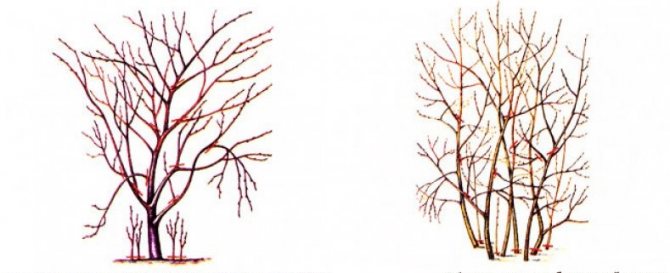

Pruning cherries shaped like a tree and a bush
Most often, varieties capable of producing a large amount of root growth are formed into several trunks (3-4), each of which is cut according to the general principle with the formation of several tiers of the main skeletal branches. The rest are given the shape of a tree with a stem (bare trunk at the bottom) 0.5–0.6 m high, consisting of 12–15 main shoots. In a cherry formed by a bush, no more than 8-10 skeletal branches are left on each of the trunks.
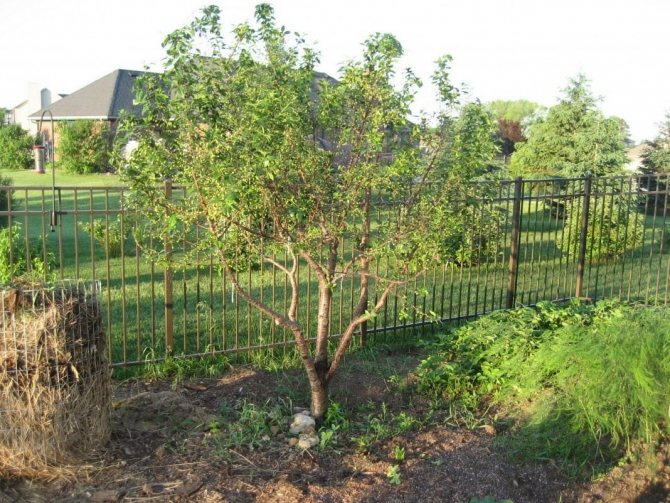

A cherry formed by a tree has a stem 50-60 cm high at the bottom
Distinguish:
- Bush cherry. Flowers, and then fruits, form on last year's branches. A replacement shoot is ejected from the growth apical bud, on which there will also be fruits next year. The harvest is mainly found at the ends of the annual branches. Therefore, young shoots are never cut off, otherwise you can lose a significant part of the berries. After harvesting the fruits, the shoot remains practically naked. The crown of this type is weeping with long thin hanging branches.
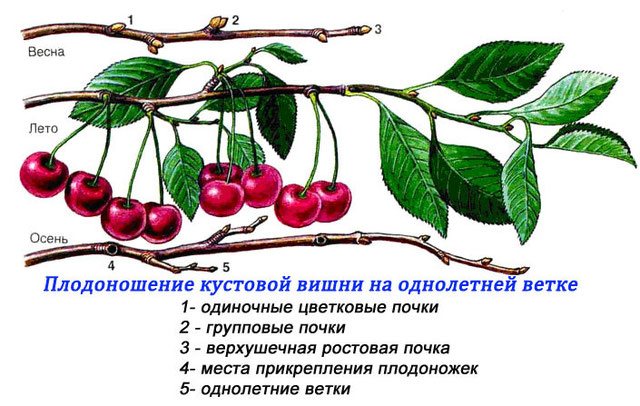

Bush cherries have fruits on annual branches. - Cherry tree. A distinctive feature of this type is the formation of fruits on special small fruit branches, which are called bouquet branches. Each of them has several simple flower buds and one vegetative growth at the top. Short bouquet twigs are located on branches of different ages and bear fruit for more than one season (about 5 years). Most of the berries are inside the crown. On annual growths, vegetative buds are laid mainly, of which new shoots or bouquet branches will develop the next year. To stimulate the formation of bouquet branches, last year's young branches are pruned.
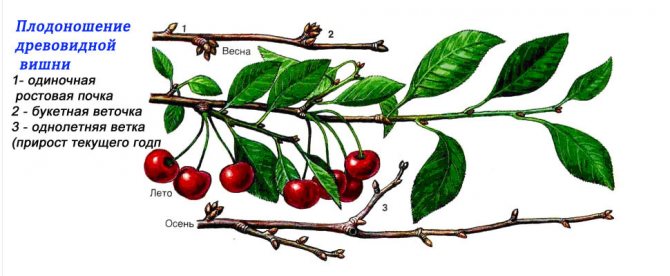

In tree cherries, fruits are formed on bouquet branches.
Cherries form two different types of buds:
- flowering simple (generative) - form exclusively flowers, and later fruits;
- growth (vegetative) - only fresh shoots and leaves grow from them.
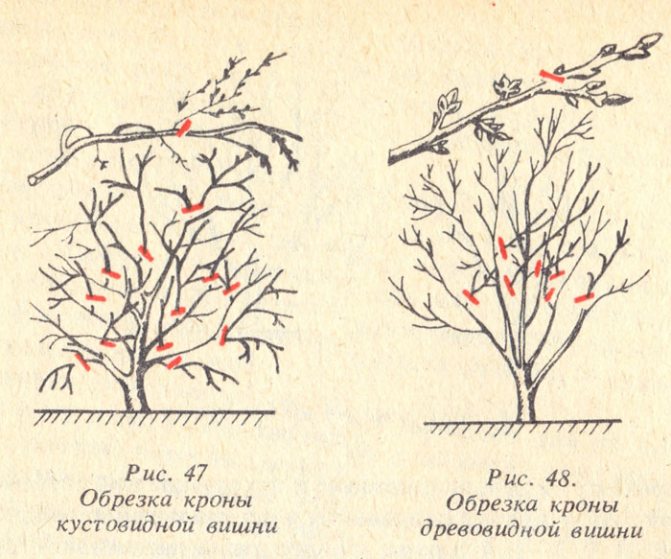

Shrub and tree cherry varieties are pruned differently
During work, it is necessary to adhere to some important recommendations:
- first, the trunk is freed from dry, diseased and insect-damaged branches;
- shoots are cut to the base, going vertically upward (tops) and growing at an uncomfortable angle;
- preference is given to branches located parallel to the ground level, they try to leave them;
- shoots that go deep into the crown and thicken it are removed;
- young annual twigs less than 25 cm long do not touch, since a growth point is located at its end (if the growth bud is removed, the entire shoot will dry out);
- from the intertwining or rubbing against each other branches-competitors choose the strongest, others remove;
- strongly drooping branches are shortened, trying to direct their growth in the desired direction (this is especially true for the lowest shoots);
- cut out all root shoots and shoots that have grown below the first skeletal branches;
- if the shoot is weak and has only a few live buds at the very end, then it is also cut to the base; shoots that do not have branches and growths are also cut out;
- monitor the height of the central shoot (trunk), it should be 15–20 cm higher than the upper branches;
- young shoots that have grown more than half a meter are slightly shortened.
Before starting pruning activities, you need to know exactly what type your plant belongs to.... In bushy varieties, the annual growth is never touched, because fruit buds are formed on it and berries are formed. Pruning for fruiting is carried out in the summer, then pinch young shoots of the current year to increase bushiness.
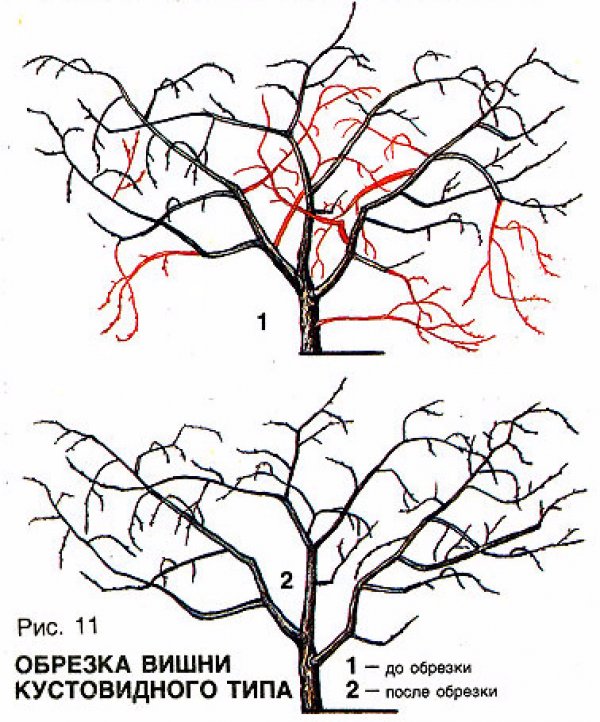

Bush cherries do not prune last year's growth
On the other hand, for tree-like varieties of cherries, last year's shoots are shortened to stimulate the development of bouquet branches, on which there will be fruits.
Video; stimulating spring pruning tree cherry
You cannot break branches with your hands, you only need to work with a sharp and disinfected tool (pruner, brush cutter, saw, etc.). Wounds must be covered with pitch, garden mastic or oil paint in order to avoid gum leakage.
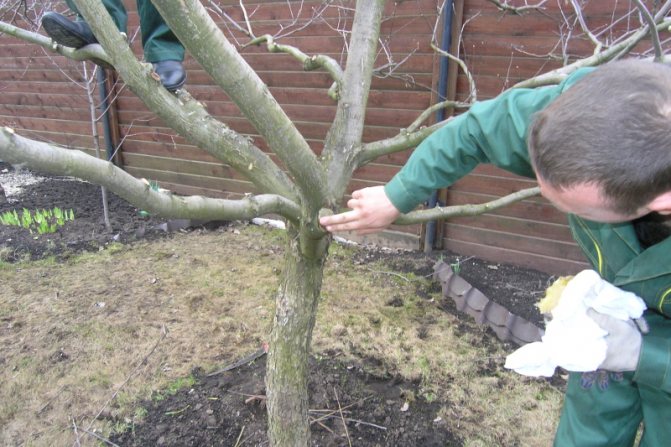

The places of the cuts must be covered with pitch so that the infection does not penetrate inside.
Video: spring pruning a cherry tree
The first cherries, planted with our own hands, we did not prune in any way. They just grew on their own. The harvest was good for several years, but then it gradually declined. It is very difficult to prune old neglected cherry trees, since sometimes it is not possible to crawl inside the crown. Fragile delicate branches break easily, and for the plant this procedure turns out to be extremely painful and traumatic. One tree even had to be cut out completely and then uprooted. In the future, we no longer neglected the formation of seedlings. The trees looked much better, a lot of fruit ripened and it was easy to collect them.
How to shape
Let's see how to form different types of cherries:
- Tree-like - pruning of this type of tree requires special care. Remove branches less than 70 cm above ground level. This should be done at an angle. Intertwining shoots also need to be removed, and the crown should be shaped like a vase. Annuals are shortened slightly to obtain new bouquet branches and lateral branches. The cherry height should be up to 3.5 m.
- Shrub - the main thing is to carefully thin out cherries of this type. Since trees tend to thicken, the fruits are often shallower, the yield decreases - if you ignore pruning, you can face all these consequences. The branches in the lower part of the crown should be located in relation to the trunk at an angle of 40 degrees, no more, otherwise the crown may break. To create a strong skeletal base, those branches that compete with the main trunk are removed. When and how to cut a cherry seedling you need to know so as not to miss the deadline. Two-year-old seedlings up to 0.5 m in height need to shorten and remove shoots inclined to the ground. Shoots should be left on those plants that have grown to 80 cm. Make sure that the cutting tool is well sharpened.
- Felt - cherries give small, but very tender and juicy fruits. Fruiting begins a year after planting, the yield indicators are good, and they can be additionally increased due to timely pruning and competent care. Perform pruning annually, otherwise the crown will begin to thicken strongly. Annual shoots give good yields, but they need to be shortened by at least a third. The damaged, sick, branches directed to the trunk are removed. After pruning, at least 12 strong shoots should remain.
Carry out spring pruning strictly taking into account the condition of the tree and its varietal affiliation.
Felt cherry processing in spring. Primary spring processing of a cherry orchard
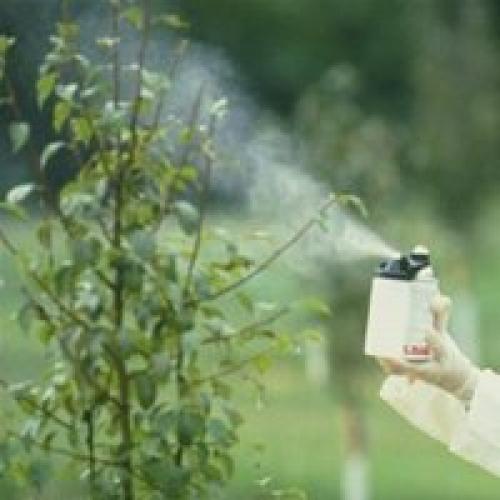

The very first cultivation of plantations has two goals. On the one hand, this is a general prevention of most diseases, on the other, it serves as a preparation for a full-scale "war" with harmful animals. Before you start spraying solutions, you first need to bring the site into proper form: - collect last year's leaves; - cut off unnecessary and damaged branches; - burn everything; - cover the cracks that have appeared on the trees with garden varnish. If you do not want to, you can not do all this, but flood the ground and plantings with a large amount of chemistry. But if we are talking about growing a large, and most importantly, a harmless crop, everything must be done according to the rules. The rules recommend that primary processing be carried out only on prepared wood and clean soil. Any time for work should be chosen, in the interval from the beginning of the establishment of constantly warm weather and until the beginning of the awakening of the kidneys. The first to spray the cherries is a urea solution (700 grams of the drug is diluted in a bucket of water). Everything is processed - soil, tree trunk, branches. After a day or two, you can carry out additional processing of the garden with fungicides. As options for preparations: - Bordeaux liquid (3%); - copper sulfate (100 grams per 10 liters of water); - iron sulfate (300 grams per 10 liters of water).
Caution! If the spraying of the urea solution is carried out during the period of the beginning of the movement of the juice, the budding buds may get burned. Therefore, temporary rules for gardening should be followed when needed, not when you want. For cherries, this is the time before the buds begin to awaken.
If during the first processing of cherries "Horus" is used as a "fortifying" agent, most diseases, such as coccomycosis, monilial burn and various kinds of spotting, are suppressed before their development begins. For pests, so they can be caught with the help of trapping belts. No chemistry, everything is "natural". Installed on the trunk, and while the overwintered winter and the newly emerging harmful animals will climb the tree, trying to overcome the obstacle, all this "company" from the trunk is collected and destroyed.
How to prune young cherries
Spring pruning is aimed at creating optimal conditions for the growth and fruiting of plants, the formation of a strong root system and roots of the correct shape. In order for pruning to bring only benefits to the young tree, first determine the leading shoot correctly - you do not need to touch it. To form, select 5 branches, which can be located at a distance of 10 cm from each other and look in different directions. Those shoots that grow at an angle or diagonally are removed, the shoots are removed from the trunk so that they do not take the sap of the tree.
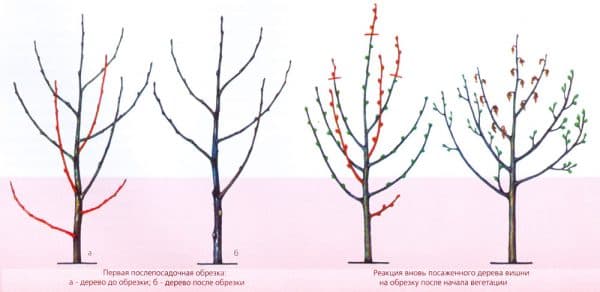

Drawing: Pruning young cherries.
Crossed branches on young trees must be removed without fail.
In bushy cherries, fruits grow mainly on annual shoots, so do pruning in the spring and especially carefully. If you remove important branches, you won't have to wait for the harvest.
Cherry short description
Cherry is a perennial crop, a representative of the Rosaceae family, contains more than 140 species. It looks like a bush or tree with ovoid leaves, white-pink flowers.Plant height 1.5-5 m, root system is 20-40 cm below soil level. The culture differs in juicy berries with a stone, which are consumed fresh, canned, frozen. Cherry fruits are healthy and tasty, and their yield reaches 15 kg per tree.
Fresh articles about garden and vegetable garden
Lunar landing calendar for september 2020 auspicious days
Lunar landing calendar for may 2020 auspicious days
Lunar landing calendar for october 2020 auspicious days
Lunar landing calendar for april 2020 auspicious days
Lunar landing calendar for june 2020 auspicious days
Lunar landing calendar for july 2020 auspicious days
Lunar landing calendar for November 2020 auspicious days
Lunar landing calendar for february 2020 auspicious days
Lunar landing calendar for march 2020 auspicious days
Lunar landing calendar for december 2020 auspicious days
Lunar landing calendar for august 2020 auspicious days
Lunar landing calendar for january 2020 auspicious days
How to rejuvenate a tree
Ripe cherries need rejuvenating pruning, the absence of which is the main reason for the decline in yield. It is not worth removing many branches at once - this would rather injure the tree than benefit it.
The bare branches of an adult cherry indicates that it needs pruning. At the same time, the branches are reduced by a third or half. Semi-skeletal, skeletal shoots are removed up to dormant buds. In one year, it is advisable to remove skeletal formations, and in another half-skeletal - so the tree will have enough strength to bear fruit (if you do everything at once, the culture will weaken, which will negatively affect both its life span and yield indicators).
In tree varieties, the shoots are shortened slightly, since fruits should be tied on them. The crown is rejuvenated if the base of the skeletal branches is bare, and their growth is no more than 15 cm per year. Remove all dried material.
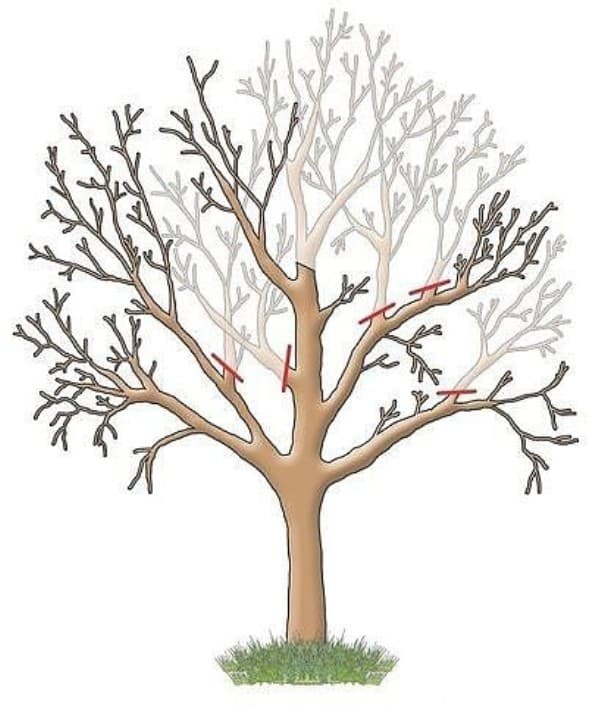

Pattern: Rejuvenating Cherry Pruning.
Pruning old cherry trees in the spring is the best way to increase yields.
Caring for trees after pruning
Pruning cherries in the spring is recommended as this is the least traumatic for fruit trees. However, even after it, the cherries need minimal care. It consists in the following:
- all cut branches are removed from the trunk circle and burned at the far end of the site;
- with the beginning of the growing season, cherries are fed with nitrogen fertilizers, they help to restore strength and build up green mass;
- shortly before flowering, the tree is treated for diseases and pests, while paying special attention to the places of the cuts.
Additional watering after pruning is only required if the spring is dry and warm and the tree is lacking moisture.
Tips for beginners
Experienced gardeners usually do not have problems with pruning, but beginners have more than enough questions. Consider the main features of the procedure:
- Make the cut carefully so that no hemp remains - gum forms on the stump during frost.
- The branches should be formed in the direction from the inside of the crown outward.
- You can prune tree cherries even if they are not strong enough. In this case, the amount of work required is minimal, the main focus is on thinning, improving the access of sunlight to the trunk and crown.
- The neglected areas of bush cherry are carefully thinned out, dry ones are removed. To prevent pests from breeding, remove all cut material from the site and burn.
- If the tree is growing quickly, limit yourself to thinning the branches. Removing fast-growing shoots allows you to form the correct crown.If the tree begins to grow slowly, radical pruning of those branches is needed that have not given fresh shoots for a year or more.
- Shrub cherries can be pruned confidently by shortening the branches to 50 cm. Secondary, frame shoots are shortened in 2 approaches. Look carefully at the young growth - if you cut off the fruitful shoots, you will be left without a crop.
- Use a knife or garden saw to cut the seedlings to avoid damaging the delicate tissues of the young plant.
Regular pruning of cherries is the key to its high yield, well-groomed crown. Also, the procedure minimizes the risks of pests.
Types and types
To properly prune any fruit tree, it is very important to be able to identify the type of branches. There are 3 types:
- vegetative - form the basis of the plant skeleton;
- accrete - grow annually during the growing season;
- bouquet - are the place of formation of fruit buds.
There are three types of cherry pruning
| A type | Description | purpose | Application frequency |
| Thinning | Complete removal of individual branches | Make the tree more compact | Seldom |
| Non-selective cropping | Removing a branch above a bud | Make the tree more voluminous, for the appearance of young shoots | Seldom |
| Selective cropping | Partial branch deletion | Cherry growth control | Often |
conclusions
- Cherry grows normally and bears fruit only if pruned regularly. The main procedures are carried out in spring and autumn, maintenance can be postponed for the summer.
- Bushy, tree-like, felt varieties have certain characteristics - take them into account when pruning.
- The rejuvenation of old crops must be done without fail, but it will be desirable to stretch the pruning for a couple of years - a culture tolerates such a procedure better than a radical one.
- In the first year after planting, the trees are not touched.
Read about the formation of apple trees on a dwarf rootstock in this article.
Palmette formation
There is another option for forming the crown of cherry trees - fan palmette. It is great for both easy harvesting and wall decoration of any knowledge. This original method takes time and painstaking work.
To form the crown, a plant with a length of 25-35 cm is planted near the proposed wall. For the future pallet, you will need a trellis - a structure for fixing the branches. Within 4 years, it is necessary to fix young shoots, thereby directing their growth in the right direction.
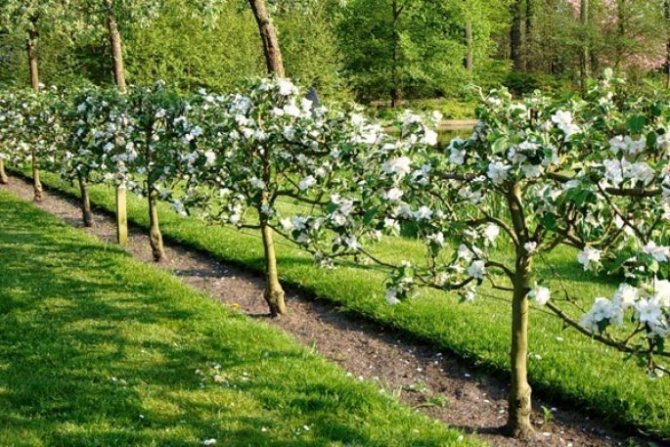

Every year it is necessary to untie the old ones, and in their place to install young shoots. As practice shows, four years is enough for the formation of a full-fledged fan.
This type of crown requires constant care. When the crown thickens, the branches become bare, there is a decrease in yield, a deterioration in appearance.

